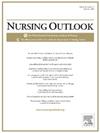An examination of factors contributing to different anesthesia models in underserved areas
IF 3.7
2区 医学
Q1 NURSING
引用次数: 0
Abstract
Background
Maternity care access is worsening across the United States, driven in part by difficulties staffing obstetric units in some hospitals. Certified registered nurse anesthetists (CRNAs) provide obstetric anesthesia services in underserved areas, including rural areas (Cohen et al., 2021, Martsolf et al., 2019), areas with low delivery volumes (Kohzimannil et al., 2015) and areas with more vulnerable populations (Liao et al., 2015).
Purpose
This study examines the characteristics of hospitals that rely on CRNAs to provide anesthesia services in their obstetric departments, including hospital-level characteristics and state-level policy decisions.
Methods
We use an exploratory and explanatory sequential mixed-method design that relies on two series of key informant interviews and a survey of CRNAs practicing obstetric anesthesia.
Discussion
We find that CRNAs practice without medical direction more frequently in areas where fewer maternity care services are available, indicating that CRNAs may be filling an important vacancy in access to care.
Conclusion
Findings support the idea that CRNAs are vital in areas which would otherwise lack anesthesia providers and obstetric services. Policies that support hospitals in allowing CRNAs to practice without medical direction may increase access to hospital obstetric anesthesia services in underserved areas.
对服务不足地区不同麻醉模式的影响因素的研究。
背景:在美国,产科护理的可及性正在恶化,部分原因是一些医院产科部门人员配备困难。注册麻醉师护士(crna)在服务不足的地区提供产科麻醉服务,包括农村地区(Cohen等,2021年;Martsolf et al., 2019)、产出量低的地区(Kohzimannil et al., 2015)和弱势人群较多的地区(Liao et al., 2015)。目的:本研究考察了依赖crna在产科部门提供麻醉服务的医院的特点,包括医院层面的特点和国家层面的政策决定。方法:我们采用探索性和解释性顺序混合方法设计,该设计依赖于两个系列的关键信息提供者访谈和对实施产科麻醉的crna的调查。讨论:我们发现,在产妇护理服务较少的地区,crna在没有医疗指导的情况下更频繁地进行实践,这表明crna可能正在填补获得护理方面的一个重要空缺。结论:研究结果支持crna在缺乏麻醉提供者和产科服务的地区至关重要的观点。支持医院允许crna在没有医疗指导的情况下执业的政策可能会增加服务不足地区获得医院产科麻醉服务的机会。
本文章由计算机程序翻译,如有差异,请以英文原文为准。
求助全文
约1分钟内获得全文
求助全文
来源期刊

Nursing Outlook
医学-护理
CiteScore
6.20
自引率
7.00%
发文量
109
审稿时长
25 days
期刊介绍:
Nursing Outlook, a bimonthly journal, provides innovative ideas for nursing leaders through peer-reviewed articles and timely reports. Each issue examines current issues and trends in nursing practice, education, and research, offering progressive solutions to the challenges facing the profession. Nursing Outlook is the official journal of the American Academy of Nursing and the Council for the Advancement of Nursing Science and supports their mission to serve the public and the nursing profession by advancing health policy and practice through the generation, synthesis, and dissemination of nursing knowledge. The journal is included in MEDLINE, CINAHL and the Journal Citation Reports published by Clarivate Analytics.
 求助内容:
求助内容: 应助结果提醒方式:
应助结果提醒方式:


